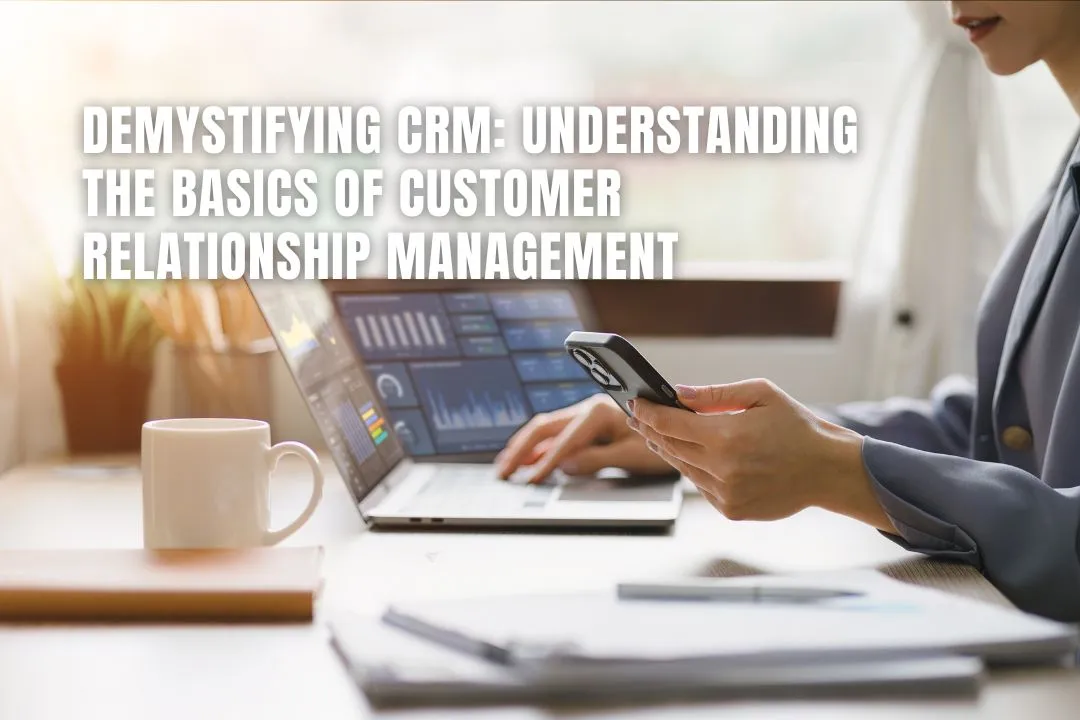November 7, 2024

Customer Relationship Management (CRM) is a crucial strategy for businesses focused on building and maintaining positive customer relationships. At its core, CRM systems serve as centralised tools that capture and manage customer information, streamline communications, and facilitate targeted marketing efforts. With functions such as automated task management, data analysis, and real-time access to customer insights, CRM systems empower companies to deliver personalised experiences, improve customer satisfaction, and drive business growth. In an increasingly competitive landscape, a well-implemented CRM strategy is invaluable, allowing businesses to anticipate customer needs, build loyalty, and make data-driven decisions that boost overall efficiency and sales.
Customer Relationship Management (CRM) is a system that helps businesses manage their interactions with customers and potential customers. It acts as a central hub for storing important information like contact details, purchase history, and communication preferences. This allows companies to understand their customers better and improve their services.
CRM systems have several key functions that help businesses:
In today's competitive market, having a good CRM system is essential. It helps businesses:
A well-implemented CRM system can significantly enhance customer satisfaction and loyalty, leading to increased sales and growth.
A CRM system acts as a central hub for all customer information. This means that all details about customers, such as their contact information, purchase history, and preferences, are stored in one place. This centralisation helps businesses to:
CRM software automates many repetitive marketing tasks, allowing teams to focus on more important activities. Some key automation features include:
With CRM systems, businesses can track their performance and make informed decisions. The analytics tools help in:
By using CRM software, companies can increase sales by understanding important customer data such as birthdays, locations, age, and industry, which can be used to personalise interactions effectively.
Implementing a CRM system can significantly improve how businesses interact with their customers. By centralising customer information, companies can provide more personalised service. Here are some key points:
CRM systems streamline various business processes, making operations smoother. Some benefits include:
With a CRM system, businesses can make informed decisions based on real-time data. This includes:
Implementing a CRM system is not just about managing contacts; it’s about building lasting relationships and driving business growth.
To select the best CRM for your company, start by understanding your specific needs. Consider the following:
Once you know your needs, compare different CRM options. Look for:
After choosing a CRM, successful implementation is key. Here are some tips:
Choosing the right CRM can transform how your business interacts with customers. A well-suited system not only improves efficiency but also enhances customer satisfaction.
To get the most out of your CRM system, it’s important that everyone in your team uses it regularly. Training your staff on how to use the CRM effectively is crucial. Here are some tips to ensure consistent usage:
Your CRM should support your overall business objectives. To achieve this, consider the following:
To understand how well your CRM is working, you need to measure its success. Here are some ways to do this:
By following these best practises, businesses can maximise the benefits of their CRM systems, leading to stronger customer relationships and improved performance.
The future of CRM is bright with the integration of AI and machine learning. These technologies help businesses understand their customers better by:
As more people use smartphones, mobile CRM solutions are becoming essential. They offer:
Businesses are increasingly focusing on the customer experience. This trend includes:
The future of CRM is about creating stronger connections with customers. By embracing these trends, businesses can enhance their relationships and drive success.
In summary, the future of CRM is shaped by technology and a commitment to understanding customers. By keeping an eye on these trends, businesses can ensure they are well-prepared for the challenges ahead.
In summary, understanding Customer Relationship Management (CRM) is essential for any business aiming to thrive in today's market. By using a CRM system, companies can keep track of their customers, streamline their processes, and improve their services. This not only helps in building better relationships with customers but also boosts sales and loyalty. Remember, the key to success with CRM lies in using it consistently and strategically. With the right approach, CRM can be a powerful tool that drives growth and enhances customer satisfaction.
CRM stands for Customer Relationship Management. It helps businesses manage their interactions with customers, making it easier to understand their needs and improve relationships.
A CRM system collects and stores customer information, like contact details and purchase history. It helps businesses track interactions and manage customer relationships more effectively.
Key features of CRM software include centralised customer data storage, automation of marketing tasks, and tools for analytics and reporting.
Using a CRM system can enhance customer relationships, improve efficiency in operations, and support data-driven decision-making.
When selecting a CRM, assess your business needs, compare different solutions, and consider how easy it is to implement and integrate into your current systems.
Best practises include regular training for users, ensuring the CRM aligns with business goals, and measuring success through key performance indicators.